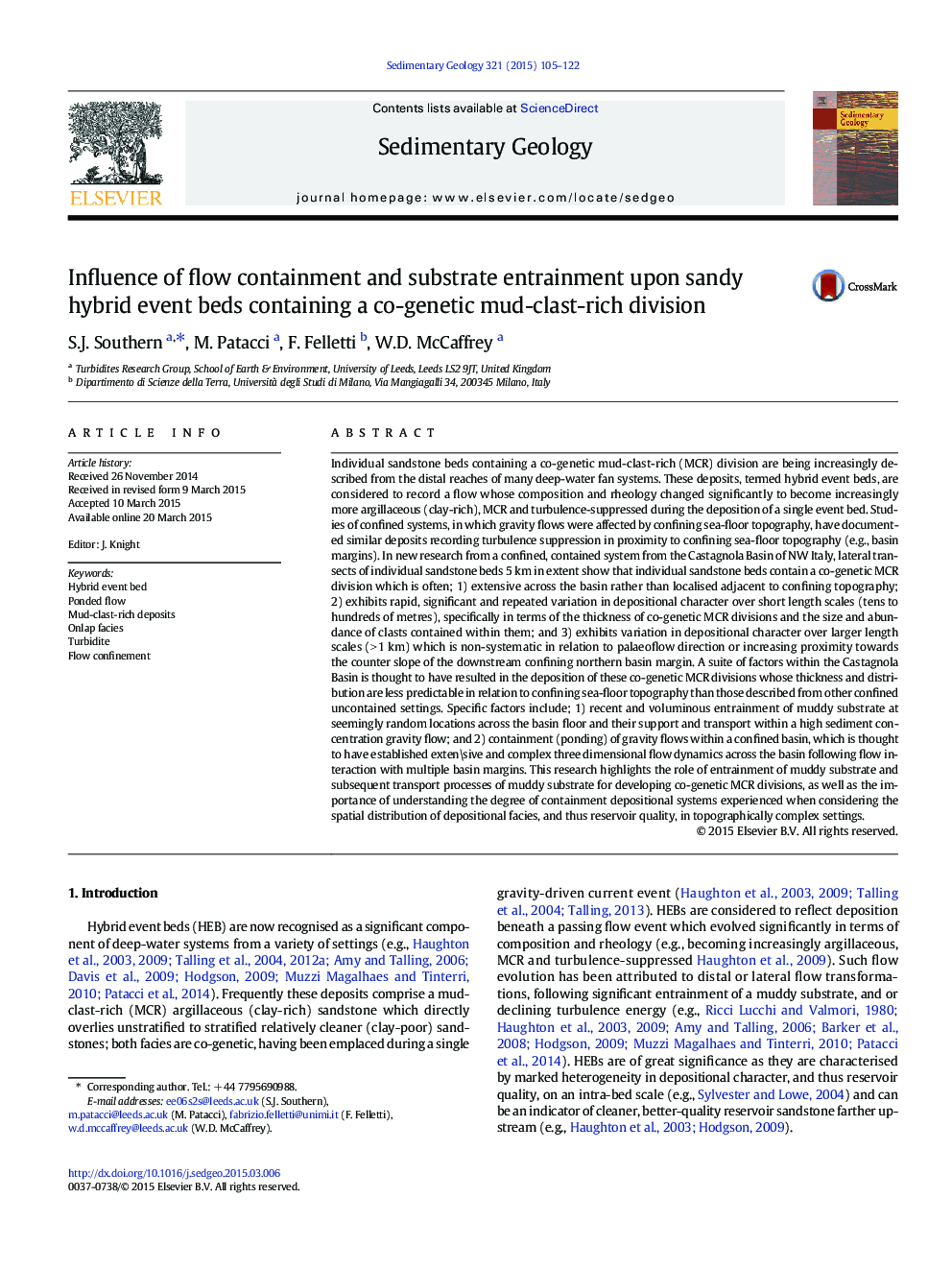| کد مقاله | کد نشریه | سال انتشار | مقاله انگلیسی | نسخه تمام متن |
|---|---|---|---|---|
| 4689217 | 1636042 | 2015 | 18 صفحه PDF | دانلود رایگان |
• Bed-to-bed correlation of strata within a confined and contained deep-water basin.
• Greater erosion and flow density promote thick mud-clast-rich divisions in beds.
• Deposit character does not vary systematically towards a confining basin margin.
• Comparisons are made with literature examples of confined, uncontained systems.
• Flow containment can further modify the dynamics and deposition of confined flow.
Individual sandstone beds containing a co-genetic mud-clast-rich (MCR) division are being increasingly described from the distal reaches of many deep-water fan systems. These deposits, termed hybrid event beds, are considered to record a flow whose composition and rheology changed significantly to become increasingly more argillaceous (clay-rich), MCR and turbulence-suppressed during the deposition of a single event bed. Studies of confined systems, in which gravity flows were affected by confining sea-floor topography, have documented similar deposits recording turbulence suppression in proximity to confining sea-floor topography (e.g., basin margins). In new research from a confined, contained system from the Castagnola Basin of NW Italy, lateral transects of individual sandstone beds 5 km in extent show that individual sandstone beds contain a co-genetic MCR division which is often; 1) extensive across the basin rather than localised adjacent to confining topography; 2) exhibits rapid, significant and repeated variation in depositional character over short length scales (tens to hundreds of metres), specifically in terms of the thickness of co-genetic MCR divisions and the size and abundance of clasts contained within them; and 3) exhibits variation in depositional character over larger length scales (> 1 km) which is non-systematic in relation to palaeoflow direction or increasing proximity towards the counter slope of the downstream confining northern basin margin. A suite of factors within the Castagnola Basin is thought to have resulted in the deposition of these co-genetic MCR divisions whose thickness and distribution are less predictable in relation to confining sea-floor topography than those described from other confined uncontained settings. Specific factors include; 1) recent and voluminous entrainment of muddy substrate at seemingly random locations across the basin floor and their support and transport within a high sediment concentration gravity flow; and 2) containment (ponding) of gravity flows within a confined basin, which is thought to have established exten\sive and complex three dimensional flow dynamics across the basin following flow interaction with multiple basin margins. This research highlights the role of entrainment of muddy substrate and subsequent transport processes of muddy substrate for developing co-genetic MCR divisions, as well as the importance of understanding the degree of containment depositional systems experienced when considering the spatial distribution of depositional facies, and thus reservoir quality, in topographically complex settings.
Journal: Sedimentary Geology - Volume 321, 15 May 2015, Pages 105–122
